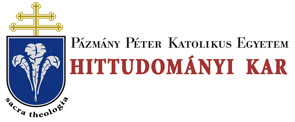Folia Theologica 21. (2010)
Barbour Hugh O.Praem.: The Cosmology of Catholic Communications: Postmodern Kerygma? A Reflection by a Disciple of SS. Albert the Great and Thomas Aquinas
150 Hugh BARBOUR man that we owe the first philosophy of communications based on the modern forms of media. Over seven hundred years earlier in his Speculum Astronomiae1 St. Albert the Great called the imaginum scientia, the science of images, the sublimitas astronomiae, the crown of judicial astronomy, or what we call today more commonly astrology. In addition to being the most eminent of the natural philosophers of the middle ages, Albert the Great was also a Doctor of Mariology, so much so that Leo XIII declared that the wisdom whereby he nourished his student St. Thomas, he had obtained through Mary, sapientiam (...) per Mariam obtinuit. His words can be seen inscribed on the base of his statue as one enters the Angelicum in Rome. What rational link could there be between the apparently obsolete study of the heavenly bodies as prognosticators and agents of future events and the contemporary philosophy of the media of communications? Indeed, media technology seems to be the most widespread effect of the overturning of the ancient cosmological world view. How could it have anything to do with astrology? My thesis here is simply that the natural and metaphysical insights of medieval Christian cosmology find an intuitive replacement in the science and art of communications. The theological and moral implications of their use and abuse correspond largely to St. Albert's and St. Thomas' presentation of the limits and use of judicial astronomy, that is, astrology, in their own day. The locus of the inquiry has changed, but the insights which govern it have not. May the Blessed Virgin then assist us to see how the Catholic use of the media of communications can restore the continuity between the patristic and medieval cosmos and our own. The present paper will trace a grand arc from the theological cosmology of the Middle Ages, as understood by St. Albert and St. Thomas and the assertions of the Magisterium of the present and recent Roman pontificates and the concerns of Catholic semiotics, in order to understand the mysterious and effective influence over human beings of the increasingly powerful media of communications. My audience will be surprised, and edified, I hope, by the place which 2 Critical Text with English Translation to be found in Boston Studies in the Philosophy of Science, CXXXV: Zambelli, P., The Speculum Astronomiae and Its Enigma: Astrology, Theology and Science in Albertus Magnus and his Contemporaries, Kluwer Academic Publishers.
